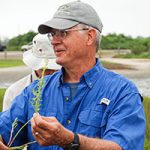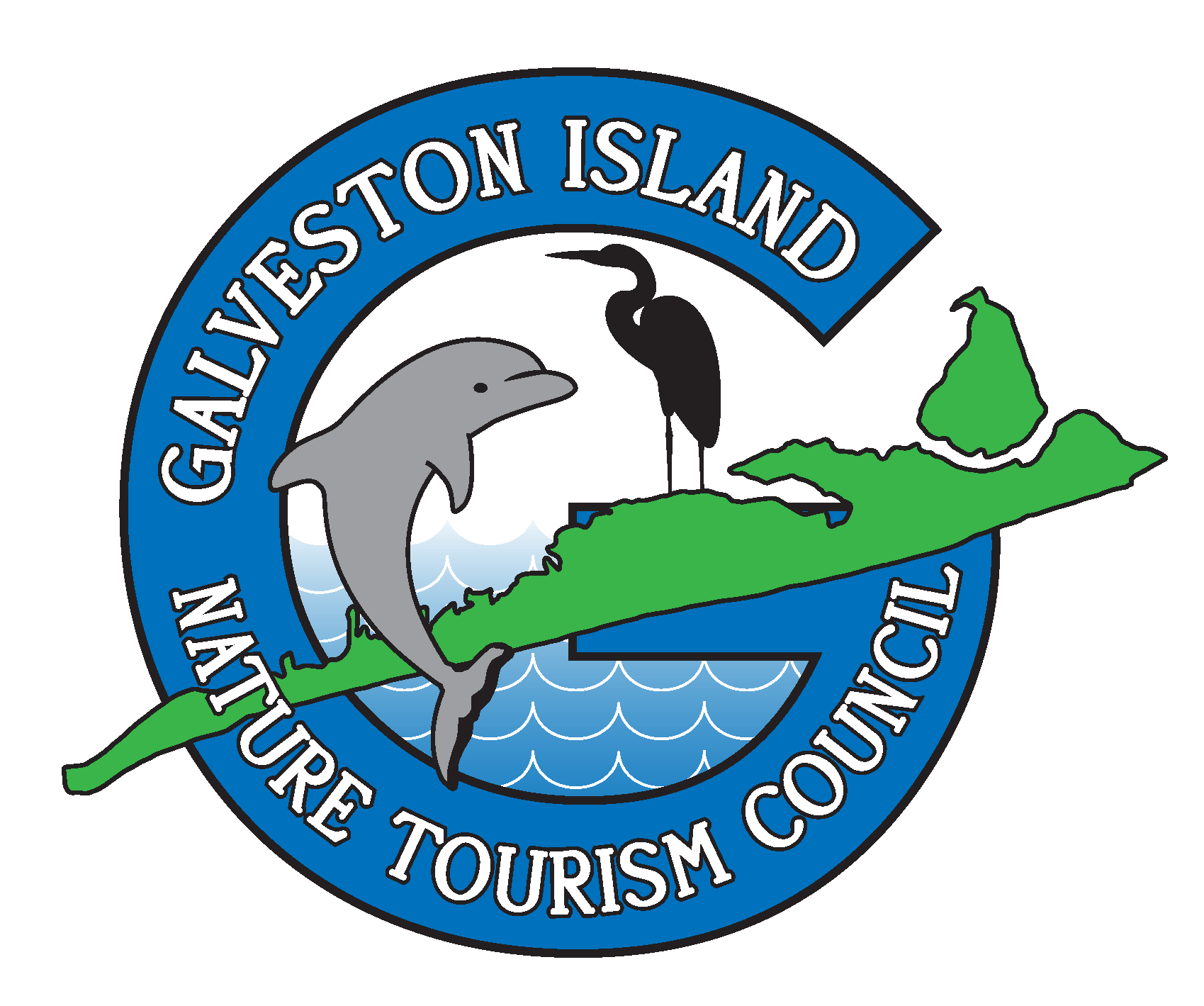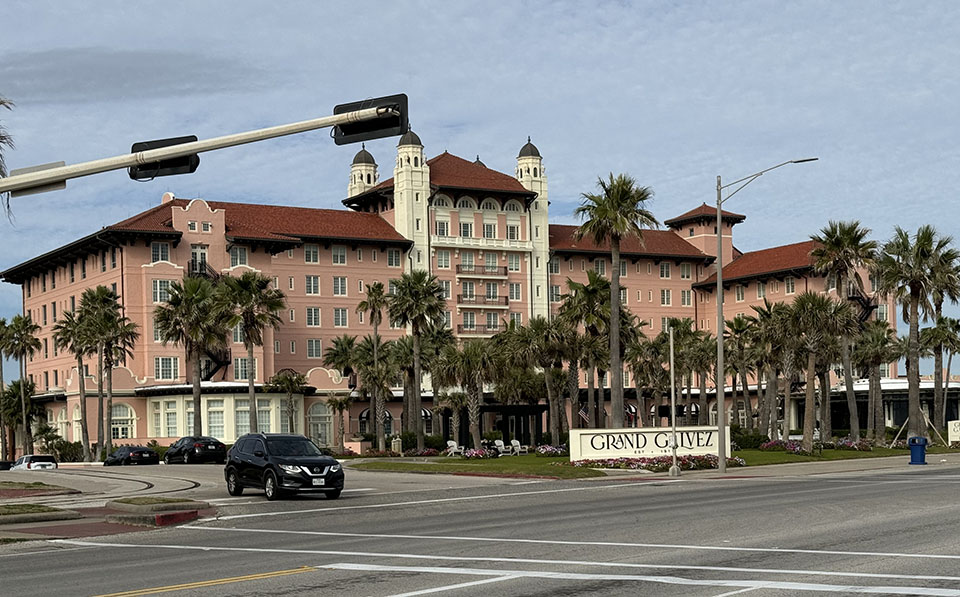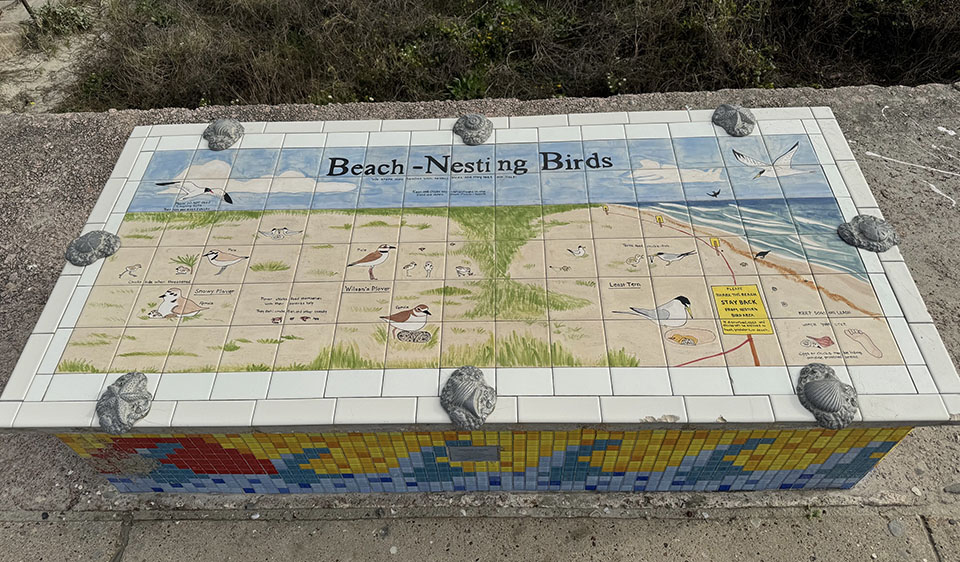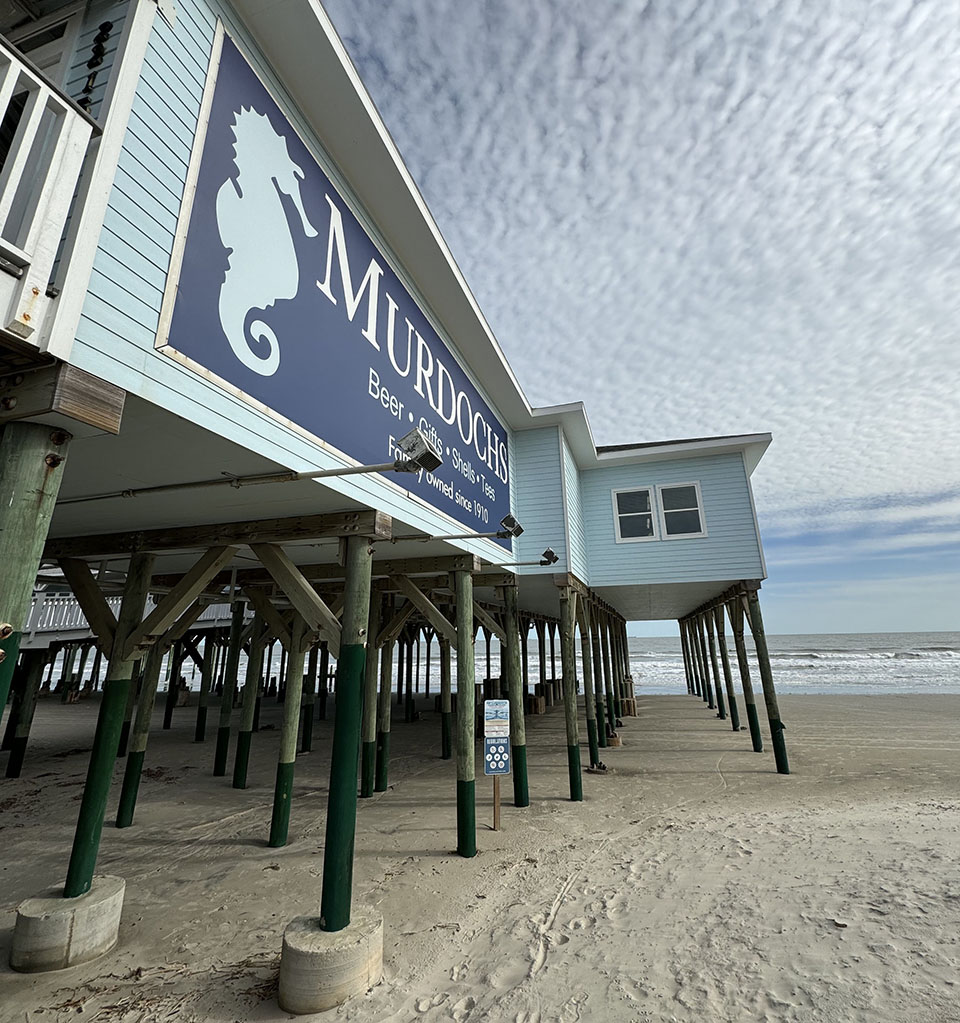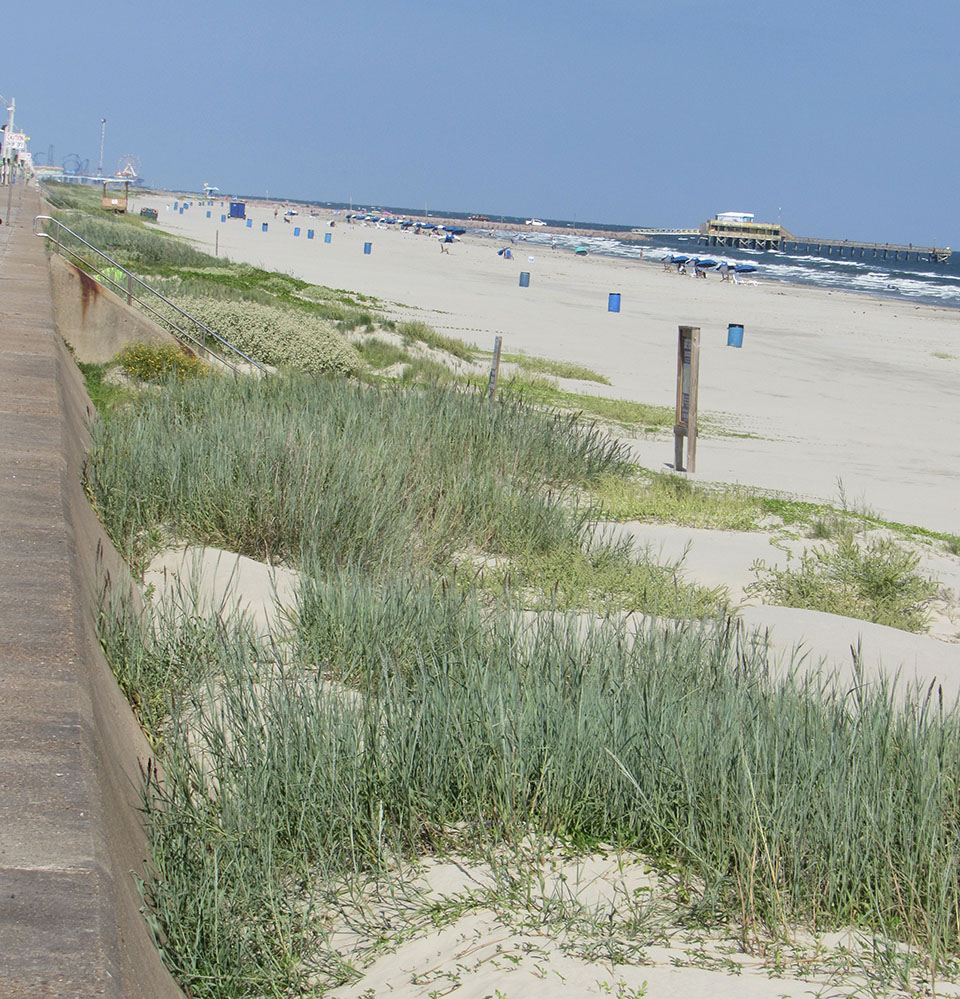by Steve Alexander
Wintertime blasts of cold north air will likely eliminate all thoughts of sunning on the sand and swimming in the Gulf. But don’t completely abandon our beachfront. A walk along Galveston’s 10-mile long seawall, sitting at a height of 17 feet above sea level, offers an excellent vantage point to survey the shore.
In a winter 2020 blog, I suggested a beachfront walk from the West end of the seawall to Galveston’s 91st Street Fishing Pier. For your seawall stroll this winter, may I suggest a walk eastward from 25th Street to 21st Street. This is a popular area due to several attractions: Galveston Island Historic Pleasure Pier, with its Bubba Gump Seafood Restaurant and amusement park rides; Murdoch’s Gift Shop offering a vast array of seashore-themed items; and the refurbished Grand Galvez Hotel, once again in her historic blaze of pink (see photo).
While strolling here, take note of the concrete benches along the seawall (see photo). Each bench is adorned with artwork that depicts Galveston marine life, history, or other aspects of the island. It’s a part of Project SIT (Seawall Interpretive Trail), a public art project sponsored by the local conservation group Artist Boat (www.artistboat.org). Take a moment to learn a unique fact about the watery world around you.
Along this stretch, there are steps leading down to the sand. Once on the sand, you can walk among the wooden columns that support Murdoch’s (see photo) or do a little beachcombing near the surf. Winter waves tend to wash up a treasure trove of shells to choose from.
Another popular seawall stretch is west of 61st Street. This area has been re-nourished with sand on several occasions and is known as Babe’s Beach in honor of a longtime advocate for public beaches, A. R. “Babe” Schwartz. The area of re-nourished beach stretches westward to the 91st Street Fishing Pier. This stretch is now prime beachfront and a great place to walk the shoreline.
As you walk this stretch of beach, notice the sand piled up against the seawall (see photo). This sand has been moved shoreward by winds to form sand mounds that are colonized by plants whose roots help anchor sand in place. All this results in the natural process of dune building, nature’s contribution to help protect the seawall from to the erosive force of waves.
While walking these two popular areas, keep an eye seaward for those kamikaze diving brown pelicans. Diving is their way of catching fish with their expansive mouth pouch which works like a dip net. If after their dive they seem to rest with their head down, it’s not because they’re tired or disappointed, it’s because they’re turning the fish head first before swallowing.
Steve Alexander
Steve Alexander teaches wetlands management at Texas A&M University at Galveston and is a former member of the Board of Directors of the Galveston Island Nature Tourism Council. He is the author of Exploring Galveston: A Naturalist’s Guide to the Island.
